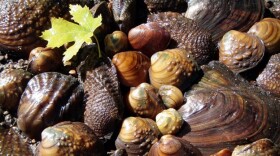Open lakes, no snow, and sweatshirt weather was the scene this December in Vilas County. Much to the chagrin of ice anglers and cross country skiers, El Nino has taken hold and has had many implications for the local people, economy, and ecosystems.
The average temperature in December of 2023 was the warmest on record within the last 100 years. According to the National Oceanic and Atmospheric Administration (NOAA), December temperatures in Minocqua, Wisconsin usually average around 16.2 degrees. We averaged 28.0 degrees this season, almost 12 degrees higher than expected. Snowfall was also well below average with only 3.8 inches reported for Minocqua in December of 2023 which usually receives 20.8 inches of snow to whiten our holidays in December.
So what is El Nino and how do ocean conditions off the coast of Ecuador make it warm and dry in Northern Wisconsin? Originally named El Nino de Navidad, the child of Christmas because of its December occurrence, El Nino happens when winds blowing from east to west along the equator are weak. Trade winds, named so because they helped trade ships reach North and South America, vary in their strength. When trade winds are high, a La Nina event can occur. La Nina happens when the trade winds are strong and they push warm water away from the west coast of Central and South America. With the warm waters push offshore, cold waters rise from the deep to the water surface. As air travels over the cooler water, it becomes colder and circulates to create changes in US weather. La Nina often results in warm and drought conditions in the Southern US, and cooler, wet conditions in our area (Hooray for the ski season!).
In contrast, 2023 is a strong El Nino. The trade winds are weak and warm water has accumulated on the west coast and is spread out extensively along the equator. Air heats up as it travels over this large expanse of warm water, circulates to the US and causes cool and wet conditions in much of the southern US and warmer dry conditions in our region.
Some may remember 2015, a recent significant El Nino event when December temperatures were high and snowfall was low. Headlines from Wisconsin Public Radio at this time in 2015 closely reflect the discussions taking place today; They included: ‘Warm Weather Leaves Ice Fishermen Restless’, ‘Lodge and Resort Owners say warm winter has hurt revenue’ ‘Dreaming of the White Christmas: Don’t Count on It’.
There is some evidence that the El Nino event in the ocean peaked in December and that temperatures across the equator are slowly starting to decline but we may remain in an El Nino state until April or May. Strong past El Nino events that created mild winter conditions have resulted in good year classes for mice and voles which in turn promotes more success for raptor nests and predator populations. El Nino also often correlates with early ice out for lakes in Wisconsin and can affect some lake levels by up to a meter. Early ice off can mean many changes for the plants, plankton, and fishes of lakes that depend on spring conditions for hatching and reproductive cues. Plankton bloom early, rice grows faster, fish spawn earlier and longer. Some of these changes are harmless but some can be detrimental. For example, Walleye often experience poor recruitment in years with extremely early or late spring ice off.
Humans, plants, and animals alike depend on winter in Northern Wisconsin. So, enjoy the snow and ice while it is here. This winter may be a short one.









